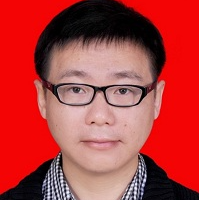Nonlinear Optics in Perovskite Materials
A special issue of Photonics (ISSN 2304-6732).
Deadline for manuscript submissions: closed (30 June 2023) | Viewed by 1077
Special Issue Editor
Special Issue Information
Dear Colleagues,
Perovskite materials exhibit excellent optical properties. The emergence of these materials has sparked widespread interest in the photonics community. Besides featuring an unprecedented performance for linear light-matter interactions, these materials have been widely recognized as promising nonlinear optical (NLO) materials. The scope of this Special Issue is to present the advances in the NLO properties of these materials, from both theoretical and experimental aspects. In addition, this topic also intends to address the practical applications based on the NLO characteristic of perovskite materials. Particular attention should be paid to the ultrafast dynamics, nonlinear refraction, nonlinear absorption, harmonic generation, stimulated emission, and lasers of the perovskite materials.
Dr. Tingchao He
Guest Editor
Manuscript Submission Information
Manuscripts should be submitted online at www.mdpi.com by registering and logging in to this website. Once you are registered, click here to go to the submission form. Manuscripts can be submitted until the deadline. All submissions that pass pre-check are peer-reviewed. Accepted papers will be published continuously in the journal (as soon as accepted) and will be listed together on the special issue website. Research articles, review articles as well as short communications are invited. For planned papers, a title and short abstract (about 100 words) can be sent to the Editorial Office for announcement on this website.
Submitted manuscripts should not have been published previously, nor be under consideration for publication elsewhere (except conference proceedings papers). All manuscripts are thoroughly refereed through a single-blind peer-review process. A guide for authors and other relevant information for submission of manuscripts is available on the Instructions for Authors page. Photonics is an international peer-reviewed open access monthly journal published by MDPI.
Please visit the Instructions for Authors page before submitting a manuscript. The Article Processing Charge (APC) for publication in this open access journal is 2400 CHF (Swiss Francs). Submitted papers should be well formatted and use good English. Authors may use MDPI's English editing service prior to publication or during author revisions.
Keywords
- perovskite materials
- ultrafast dynamics
- stimulated emission
- lasing
- fiber laser
- nonlinear refraction
- nonlinear absorption
- harmonic generation
- optoelectronic devices





